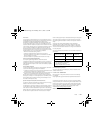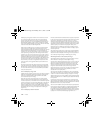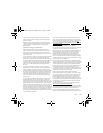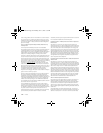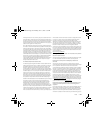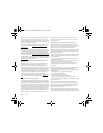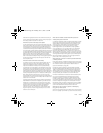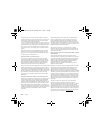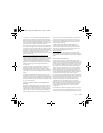
200 :: FCC
However, in the case of market based licensing (e.g., PCS, cellular), the
licensee is granted the authority to operate a radio communications
system in a geographic area using as many facilities as are required, and
the licensee is not required to provide the FCC with specific location and
operating parameters of these facilities.
Information on site specific licensed facilities can be found the “General
Menu Reports” (GenMen) at http://gullfoss2.fcc.gov/cgi-bin/ws.exe/
genmen/index.hts.
The various FCC Bureaus also publish on at least a weekly basis, bulk
extracts of their licensing databases. Each licensing database has its own
unique file structure. These extracts consist of multiple, very large files.
The FCC's Office of Engineering and Technology (OET) maintains an
index to these databases at http://www.fcc.gov/oet/info/database/fadb.html
.
Entry points into the various databases include frequency, state/county,
latitude/longitude, call-sign and licensee name. For further information on
the Commission's existing databases, you can contact Donald Campbell at
dcampbel@fcc.gov
or 202-418-2405.
Can local and state governmental bodies establish limits for RF
exposure?
Although some local and state governments have enacted rules and
regulations about human exposure to RF energy in the past, the
Telecommunications Act of 1996 requires the Federal Government to
control human exposure to RF emissions. In particular, Section 704 of the
Act states that, “No State or local government or instrumentality thereof
may regulate the placement, construction, and modification of personal
wireless service facilities on the basis of the environmental effects of radio
frequency emissions to the extent that such facilities comply with the
Commission's regulations concerning such emissions.” Further
information on federal authority and FCC policy is available in a fact sheet
from the FCC's Wireless Telecommunications Bureau at www.fcc.gov/
wtb.
Do wireless phones pose a health hazard?
The available scientific evidence does not show that any health problems
are associated with using wireless phones. There is no proof, however,
that wireless phones are absolutely safe. Wireless phones emit low levels
of radiofrequency energy (RF) in the microwave range while being used.
They also emit very low levels of RF when in the stand-by mode. Whereas
high levels of RF can produce health effects (by heating tissue), exposure
to low level RF that does not produce heating effects causes no known
adverse health effects. Many studies of low level RF exposures have not
found any biological effects. Some studies have suggested that some
biological effects may occur, but such findings have not been confirmed
by additional research. In some cases, other researchers have had
difficulty in reproducing those studies, or in determining the reasons for
inconsistent results.
What is FDA's role concerning the safety of wireless phones?
Under the law, FDA does not review the safety of radiation-emitting
consumer products such as wireless phones before they can be sold, as it
does with new drugs or medical devices. However, the agency has
authority to take action if wireless phones are shown to emit
radiofrequency energy (RF) at a level that is hazardous to the user. In such
a case, FDA could require the manufacturers of wireless phones to notify
users of the health hazard and to repair, replace or recall the phones so
that the hazard no longer exists.
Although the existing scientific data do not justify FDA regulatory actions,
FDA has urged the wireless phone industry to take a number of steps,
including the following:
Support needed research into possible biological effects of RF of the
type emitted by wireless phones;
Design wireless phones in a way that minimizes any RF exposure to
the user that is not necessary for device function; and
Cooperate in providing users of wireless phones with the best
possible information on possible effects of wireless phone use on
human health
FDA belongs to an interagency working group of the federal agencies that
have responsibility for different aspects of RF safety to ensure
coordinated efforts at the federal level. The following agencies belong to
this working group:
National Institute for Occupational Safety and Health
Environmental Protection Agency
Federal Communications Commission
Occupational Safety and Health Administration
National Telecommunications and Information Administration
The National Institutes of Health participates in some interagency working
group activities, as well.
FDA shares regulatory responsibilities for wireless phones with the
Federal Communications Commission (FCC). All phones that are sold in
the United States must comply with FCC safety guidelines that limit RF
exposure. FCC relies on FDA and other health agencies for safety
questions about wireless phones.
FCC also regulates the base stations that the wireless phone networks
rely upon. While these base stations operate at higher power than do the
wireless phones themselves, the RF exposures that people get from these
RushUG.book Page 200 Monday, June 13, 2005 1:33 PM






